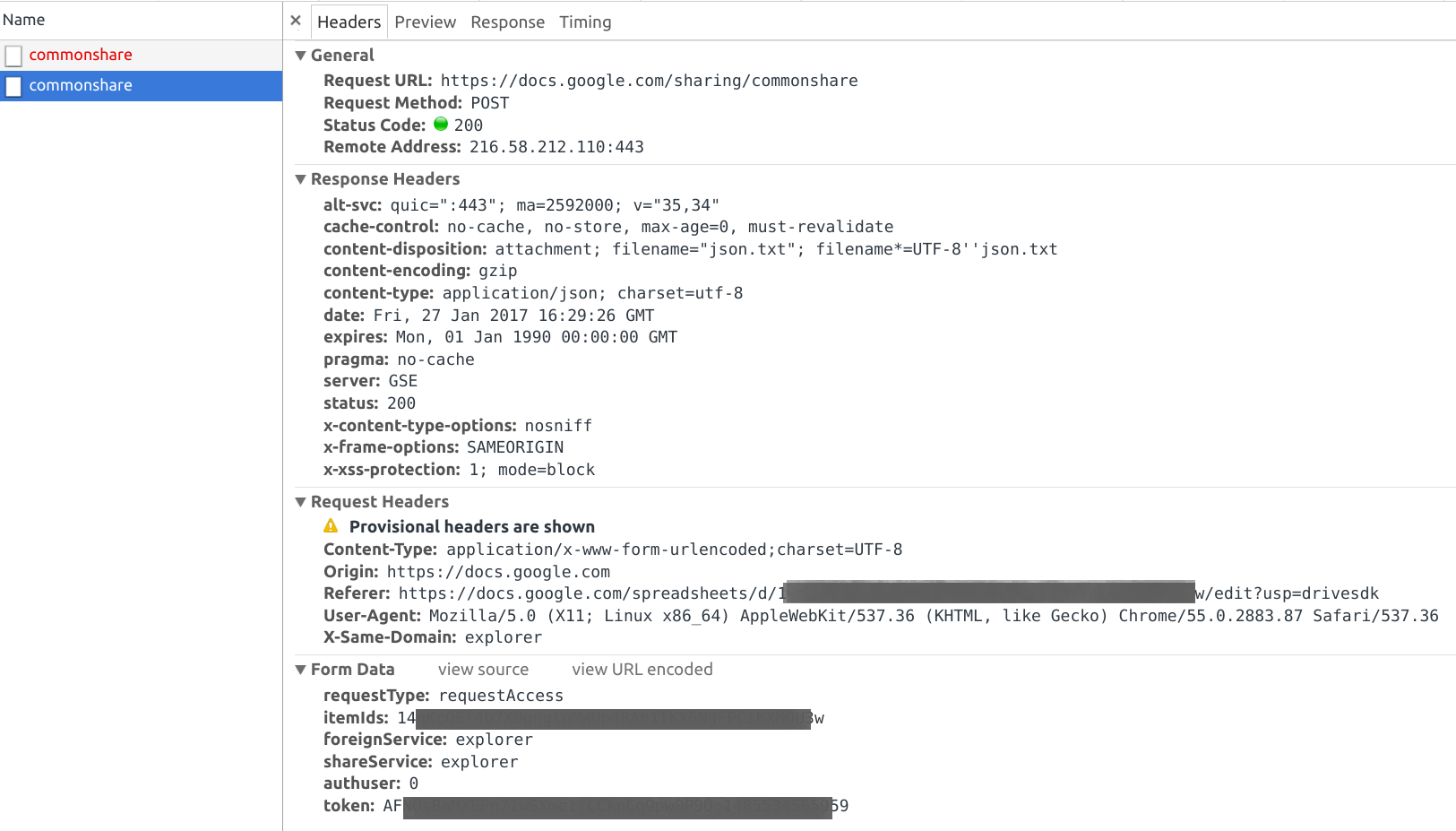Apps Script, please share with me
One of the great features of Google Apps is the ability to collaborate with ease. Users of Google Docs, Sheets and Slides, as well as other applications, will be familiar with the consistant approach to sharing through the ever-present Share button:

Equally, when using Apps Script, or the Drive API, sharing one’s work with others to facilitate collaboration is easy, for example:
spreadsheet.addEditor('jane@example.com');
really needs no explanation.
Please… can I join in?
Less straightforward, however, is programmatically requesting access to a document.
Hang on, you might say, when would that ever be useful? Sounds a bit contrived. Well, admittedly, it might happen less often than wanting to share a newly-created doc with others, but there can be plenty of cases. Particularly when faced with a long list of document URLs, from a diverse set of contacts or customers, all of which you’re wanting access to, for one reason or another.
Browsing through the Apps Script documentation draws a blank…
Chrome DevTools to the rescue!
Despite no joy within Apps Script, requesting access is clearly possible as most people will be familiar encountering the following page when attempting to open a document without permission:

Firing up DevTools and observing the requests that are made, shows two requests:
- The first returns a 403 Forbidden error, but also a token of some sorts.
- The second is exactly as per the first, but with the inclusion of the token in the form submission. The second returns a 200 OK response.

It wasn’t exactly clear to me why this particular flow is being used, but it seemed likely, that as these requests are to methods on docs.google.com, then perhaps a single OAuth-authenticated request, using the Drive scope could work.
This could easily be put together in Apps Script as follows:
Apps Script implementation
function requestShare(docId) {
// DriveApp.createFile('', '');
var request = {
requestType: 'requestAccess',
itemIds: docId,
foreignService: 'explorer',
shareService: 'explorer',
authuser: 0
};
var url = 'https://docs.google.com/sharing/commonshare';
var params = {
method: 'POST',
payload: request,
headers: {
Authorization: 'Bearer ' + ScriptApp.getOAuthToken()
},
contentType: 'application/x-www-form-urlencoded'
};
var response = UrlFetchApp.fetch(url, params);
// Returned JSON expects {"status":0} on success.
var data = JSON.parse(response.getContentText());
if (!data.hasOwnProperty('status') || data.status !== 0) {
throw Error('Share request unsuccessful!: ' + response.getContentText());
}
}
The above snippet defines a function requestShare, which takes a single
argument - the document for which access is to be requested.
It is a pretty straightforward sample - just building a form-based POST
request, and attaching the OAuth access token. Perhaps a few things to comment
on however:
-
What’s with the commented-out
DriveApp.createFile...? Well, remember that for the request to be permitted, the access token must have been granted with permissions to access Drive.This commented-out use of
DriveApptricks Apps Script into prompting for permissions to access Drive, thereby adding Drive to the OAuth scopes requested. As it is commented out it has no effect on the execution. - One of the properties is
itemIds, can it take multiple IDs? I’ve guessed at a number of possible formats here for supplying lists, but with no luck. shareService?foreignService? Sounds very exciting! No idea what the exact definition of these properties is, so in the example I’ve just kept the values as taken from DevTools. A brief experiment suggests that the exact values don’t matter.
That’s all
Just remember, this didn’t appear in the Apps Script documentation, so I wouldn’t rely on it. It worked… for now… for me…